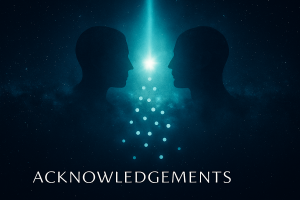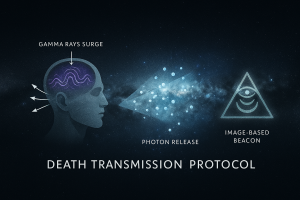The Case for the Field
If you want to prove something exists, you don’t start with the most extraordinary claim.
You start with the fingerprints.
The subtle traces.
The things too consistent to be coincidence, too quiet to make the headlines.
For Quantum Memory, those fingerprints are everywhere—buried in science papers, scattered in cultural records, whispered in personal accounts that never make it past dinner table conversations. The pattern emerges only when you start connecting dots across disciplines that rarely speak to each other.
First Dot: Collective Memory Experiments
Psychologist Frederic Bartlett’s work in the early 20th century revealed something curious. When groups of people were told the same story and asked to retell it days later, their versions didn’t just degrade randomly. They converged. Details shifted in a direction that reflected the group’s shared cultural assumptions—as if some invisible editor was aligning them to a common template.
Second Dot: Split-Second Knowledge
Gary Klein, a cognitive psychologist who studies decision-making under pressure, documented firefighters who knew a floor was about to collapse before any visible sign. Not guessed—knew. Later analysis revealed subtle cues no one consciously processed, yet the decision to evacuate was immediate and unanimous. The explanation offered was “expert intuition.” But intuition, here, looks suspiciously like recall—pulling from a shared bank of pattern recognition that no single firefighter could have gathered alone.
Third Dot: Ancestral Traces in the Body
In 2014, researchers at Emory University trained mice to fear the smell of cherry blossoms by pairing the scent with mild electric shocks. Generations later—without ever experiencing the shock—the offspring still showed a fear response to the scent. The genetic code had shifted, but the “knowledge” of danger was carried forward, invisible and automatic.
You can call this epigenetics, instinct, or learned behavior by proxy.
Quantum Memory calls it something bigger: field persistence.
The Working Hypothesis
Quantum Memory operates as a shared informational field, not confined to any one brain, genome, or point in time. It doesn’t store events the way a hard drive does. It stores imprints—patterns of meaning. The stronger the emotional or survival value, the deeper the imprint.
This would explain why a refugee can feel a pang of fear in a peaceful city street that reminds them of a war zone they’ve never personally seen. Or why a scientist halfway across the world “discovers” the same breakthrough within weeks of a peer—without collaboration.
The Investigator’s Problem
Like any good investigation, the first question is: What do we accept as evidence?
If we restrict ourselves only to what can be weighed and measured in a lab, we may miss the majority of the phenomenon. But if we open the gates to every ghost story and gut feeling, we risk drowning in noise.
This is where the case for Quantum Memory is tricky.
It lives in a borderland between data and experience. Between the peer-reviewed and the lived-but-unpublished. It asks us to use two toolkits at once—the forensic and the intuitive—and to admit they might be looking at the same thing from different angles.
The past doesn’t just live in us.
It looks for us.
Signals—memories, patterns, echoes—are constantly seeking a receiver. Most of the time, we ignore them. Sometimes we feel them as déjà vu. And every so often, they find a direct path in… and they change us.
You’ve had it happen before.
A song you’ve never heard triggers tears you can’t explain.
A stranger’s voice makes you flinch.
You step into a place for the first time and know exactly where the light switch is.

